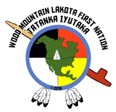Prompt:
- Conduct an environmental scan of Indigenous peoples’ identity in your community (where you grew up in Canada, or where you live now if raised in another country). The environmental scan should include the languages spoken by particular Indigenous peoples, nations or membership to bands, ceremonies, worldviews, relationship with place and land.
- Diagram the characteristics and juxtapose them to your own identity, worldview, and relationship to place and land. Practice naming yourself & making your identities complex. Use the readings (Vowel) to help.
- Submit a visual diagram, and written reflection of how you have come to understand yourself in relation to the Indigenous community, along with how you see yourself as a “Treaty Partner.”
Response:
I grew up in a very small community named Lafleche Saskatchewan. A town with a population lower than 400; including surrounding farms. A huge part of my identity comes from growing up in Lafleche. Growing up in such a small community definitely has its benefits and its challenges and had a big part in molding me into the person I am today. Some of the benefits that came from growing up in such a small community was the opportunities it gave everyone to create very close bonds. It was as if we were all family; we helped each other, supported each other, loved each other, critiqued each other, etc. However, while there were many benefits, living in such as small community also came with its challenges, the biggest being that there was no diversity. When I say no diversity, I mean that in any way possible. Almost everyone was the same race, ethnicity, religion, job occupation, family structure, etc. however, there were few that allowed the town some diversity.
With that being said the closest reserve to Lafleche would be the Wood Mountain First Nation reserve which is affiliated with the File Hills Qu’Appelle Tribal Council.



- The distance between Lafleche and Wood Mountain is 54 kilometers.
- Wood Mountain First Nation is located about 5 kilometers SouthWest of the village of Wood Mountain, Saskatchewan.
“Métis settled on the slopes of Montagne de bois in 1870, building houses from the plentiful poplar trees. In 1871 the HBC trading post at Wood Mountain became the prairie depot of the Boundary Commission. Use of the area by whisky runners and horse thieves prompted the NWMP to purchase the depot in 1876 and maintain a post until 1918. Over 5000 Dakota Sioux and their leader, Sitting Bull, took refuge in this area after the Battle of the Little Bighorn in 1876. A provincial historic park was established in 1965” ~ https://www.thecanadianencyclopedia.ca/en/article/wood-mountain
I have visited Wood Mountain plenty times growing up, I however, have never visited Wood Mountain First Nation reserve. I also never learned anything about this place up until now. I have very limited knowledge on what this reserve encompasses. I am not an expert and I acknowledge and respect the peoples living on this reserve. I have not talked to an expert, visited, lived through, or be involved with this place. I cannot say with complete certainty, anything about the Wood Mountain Fist Nation. I am doing my part by not spreading false information that has come from another middle class, white settler.
References
Aboriginal Affairs and Northern Development Canada. (2010, September 15). First Nations Map of Saskatchewan. Retrieved from https://www.aadnc-aandc.gc.ca/eng/1100100020616/1100100020653
Wood Mountain. (n.d.). Retrieved from https://www.thecanadianencyclopedia.ca/en/article/wood-mountain
Wood Mountain Lakota First Nation . (n.d.). Retrieved from http://fhqtc.com/wood-mountain